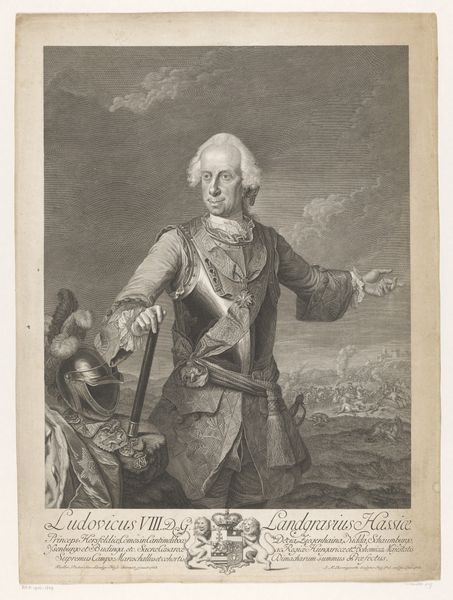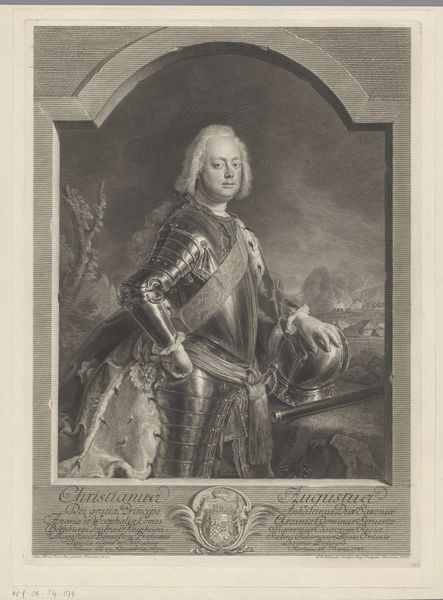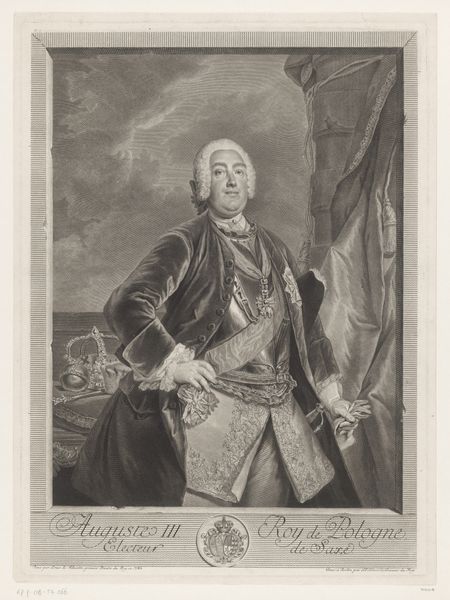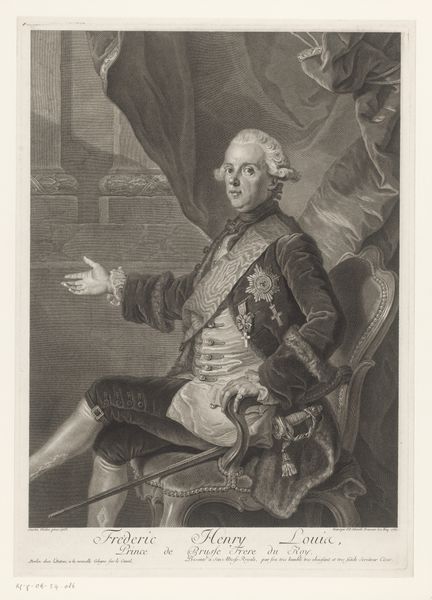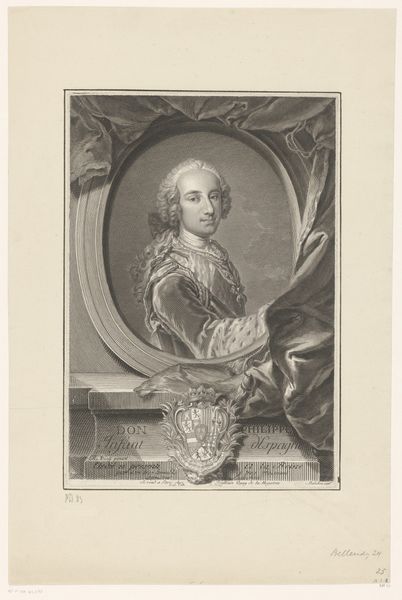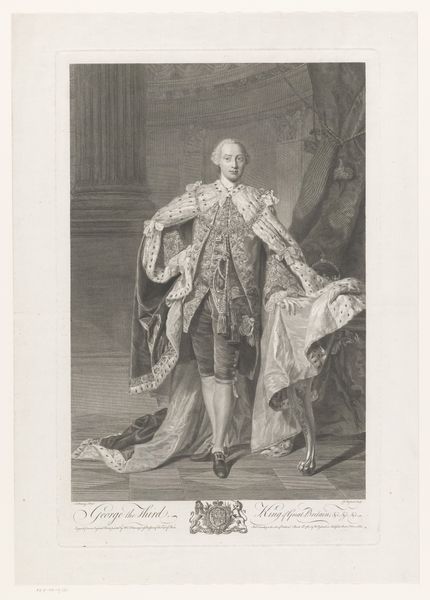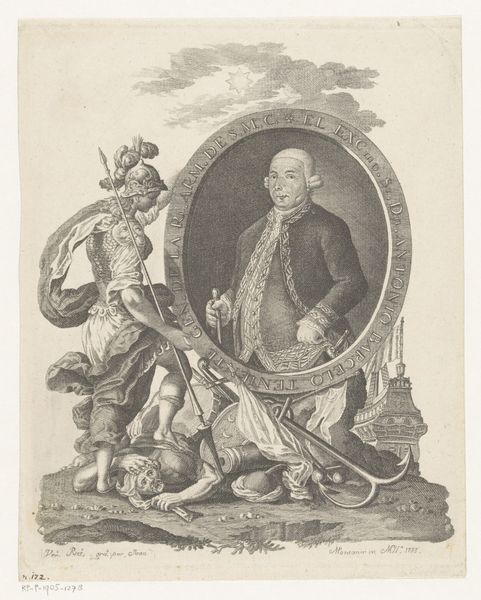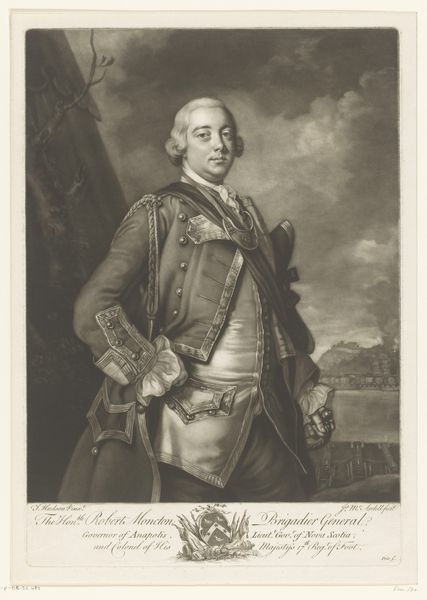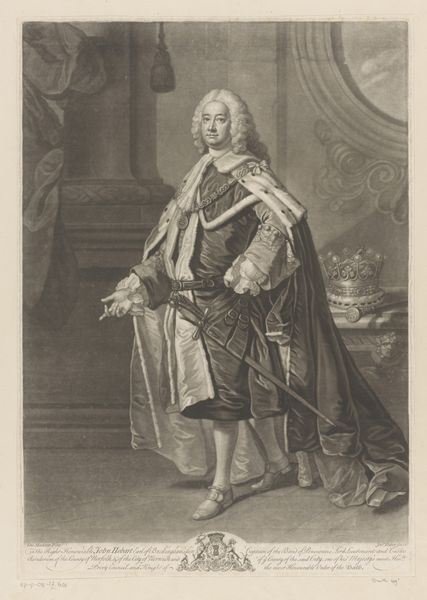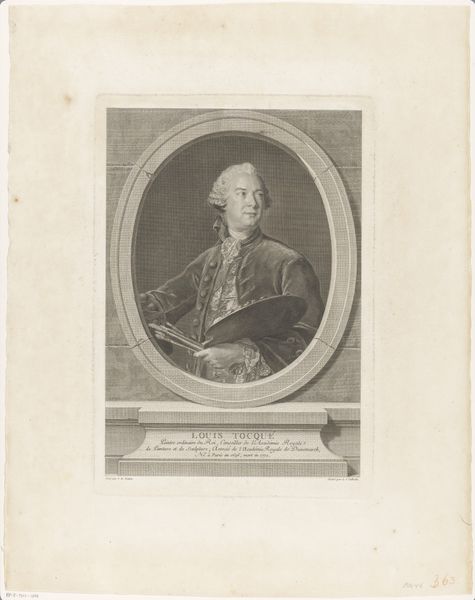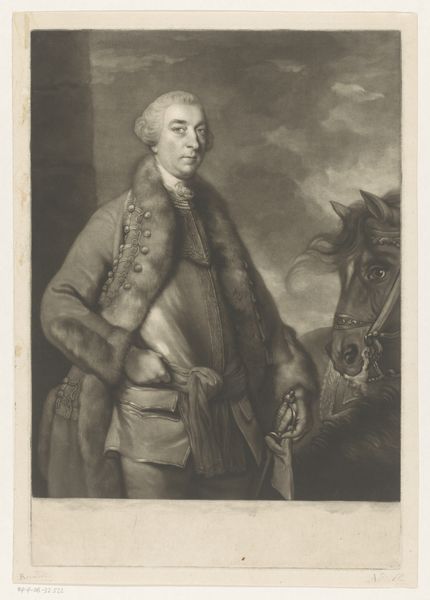
engraving
#
baroque
#
old engraving style
#
history-painting
#
academic-art
#
engraving
Dimensions: height 479 mm, width 355 mm
Copyright: Rijks Museum: Open Domain
Curator: This is a portrait of Kyrylo Rozumovskyi, completed in 1758 by Georg Friedrich Schmidt. It’s an engraving, currently held at the Rijksmuseum. What are your first thoughts? Editor: I'm immediately struck by the air of formality and power. The ornate details, the staff, the setting... It's almost theatrical, but in a very controlled, dignified way. What does it tell us about Rozumovskyi's role? Curator: Rozumovskyi was a significant figure in 18th-century Russia and Ukraine, serving as Hetman of Ukraine, essentially a military leader and head of state. Schmidt's portrayal places him in the baroque style, common for depicting leaders at the time, but it also seems calculated to project a specific image. He wanted to connect the image of Razumovskyi with leadership imagery that went beyond simply personal. Editor: Absolutely. Notice the battle scene discreetly in the background – almost like a stage set for a ruler, placing him in that martial, authoritative context. What about the symbolic elements, how do they function here? Curator: The staff he holds, topped with a globe, is a powerful symbol of authority. And then there's the sash across his chest, surely indicating high rank and likely tied to the order of St. Andrew - important from both political and spiritual perspectives. It ties him to a specific cultural context. The eagle, repeated motifs, and general ornamental quality certainly reflect baroque values. Editor: Considering this was made in the mid-18th century, and Rozumovskyi's complicated role bridging Ukrainian and Russian interests, does this image present a particular message for viewers in the period? Curator: Indeed, and considering the artist's location as being predominantly operating in areas connected with Prussian influence, Rozumovskyi's presentation becomes more multi-layered than simply his Ukrainian heritage and influence in Russia, adding an extra perspective to the imagery we see presented to us. I'm curious as to what you make of this presentation as an iconographer. Editor: Seeing those influences converge underscores how images negotiate meaning. Schmidt isn't just documenting; he’s actively shaping perceptions of Rozumovskyi. He merges recognizable, traditional tropes for portraying European leaders, with particularized touches designed to add regional distinctiveness. Curator: It reminds us that these official portraits aren't just representations of individuals. They’re complex constructions intended to reinforce and legitimize power structures within a specific social and political environment. Editor: Precisely. Looking closely at the details – the scepter, the attire – they collectively craft an intended meaning for future viewers like ourselves.
Comments
No comments
Be the first to comment and join the conversation on the ultimate creative platform.
